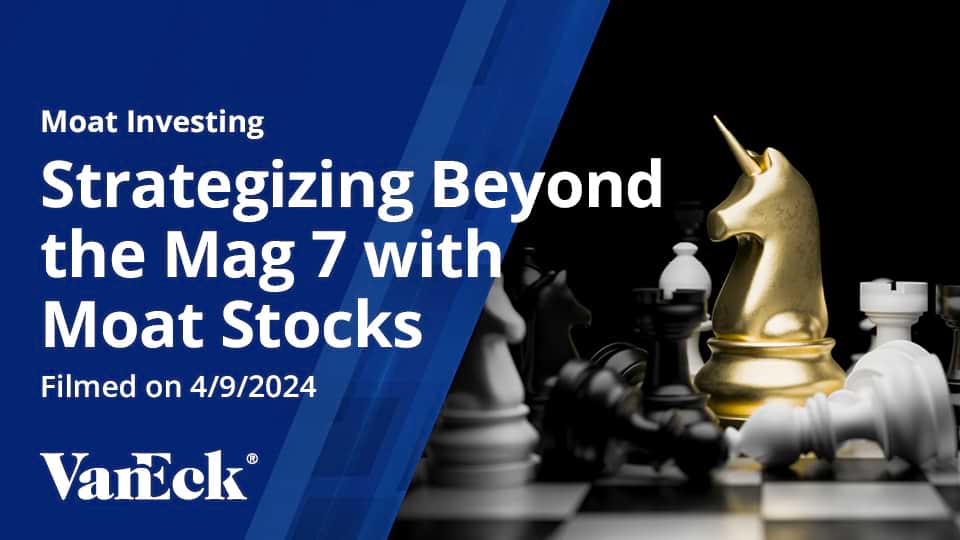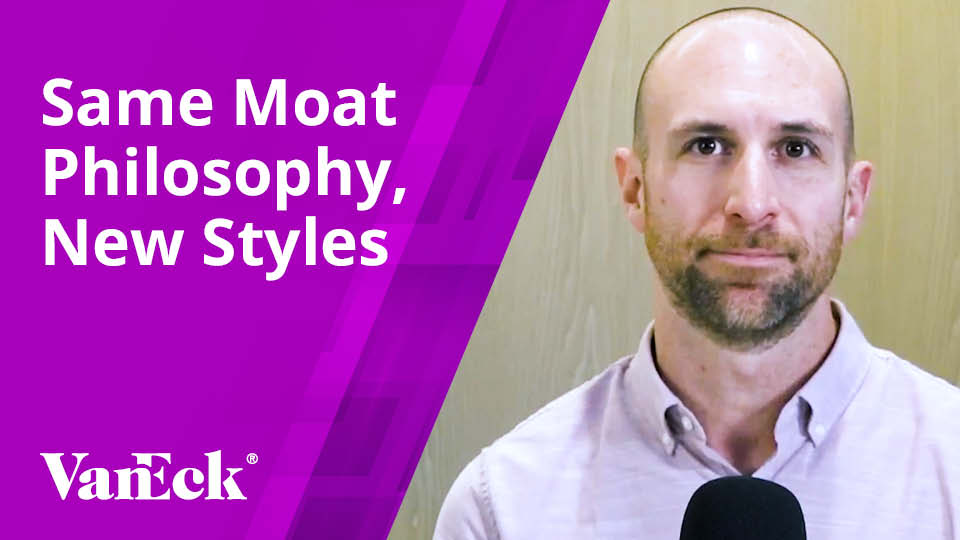An Investor's Guide to Intangible Assets
August 10, 2023
Read Time 5 MIN
The term “economic moat” describes a company’s ability to maintain its competitive advantages and defend its long-term profitability. This moat investing education series explores the five primary sources of moat, according to Morningstar: 1) switching costs; 2) intangible assets; 3) network effect; 4) cost advantage; 5) efficient scale. Here we explore the concept of intangible assets.
Introduction to Intangible Assets
Intangible assets are non-physical assets that bring value to a company but lack a physical presence. Unlike tangible assets, intangible assets are not easily quantifiable and can be more challenging to evaluate.
Intangible assets play a crucial role in driving many companies’ success and establishing their competitive advantage. While tangible assets like machinery and inventory are easily quantifiable, intangible assets are more intangible in nature and often overlooked. In this guide, we will explore the significance of intangible assets and their impact on a company's long-term prosperity.
Types of Intangible Assets
Examples of intangible assets include intellectual property, brand equity, customer relationships, and proprietary technology.
Intellectual Property (IP)
Intellectual property refers to creations of the mind that have commercial value and are protected by law. This includes patents, trademarks, copyrights, and trade secrets. IP assets safeguard a company's innovations, inventions, designs, and creative works, granting exclusive rights and preventing unauthorized use. Companies like pharmaceutical giant Eli Lilly rely heavily on their patent portfolio to protect their groundbreaking drugs and maintain a dominant market position.
Brand Equity
Brand equity represents the value and reputation associated with a company's brand. It encompasses brand awareness, customer perception, brand loyalty, and the overall market position of the brand. Strong brand equity provides a competitive edge by influencing customer purchasing decisions and fostering trust and loyalty. For example, Starbuck’s brand equity is a key driver of its success, enabling the company to command premium prices for its products and maintain a dedicated customer base.
Customer Relationships
Customer relationships are intangible assets that result from a company's efforts to establish and maintain strong connections with its customers. These relationships are built on trust, customer satisfaction, and a personalized experience. Customer relationships lead to repeat business, customer loyalty, positive word-of-mouth referrals, and increased customer lifetime value.
Proprietary Technology
Proprietary technology refers to unique and exclusive technology developed by a company that provides a competitive advantage. It can include software systems, algorithms, innovative manufacturing processes, or specialized tools.
In today's business landscape, intangible assets have gained increasing importance. They are key drivers of competitive advantage, revenue generation, and market positioning. Companies that effectively manage and leverage their intangible assets can differentiate themselves from competitors, build customer loyalty, attract investment, and establish long-term success.
Investing in Intangible Assets
Intangible assets can provide a company with a sustainable competitive advantage in the market. Strong brand recognition, customer loyalty, and reputation built over time create barriers for competitors to replicate.
Intangible assets can also be significant sources of revenue for a company. Patents and proprietary technology grant exclusive rights and enable companies to monetize their innovations. Intellectual property, such as software or creative works, can generate licensing fees or royalties. These revenue streams contribute to a company's profitability and long-term growth.
Intangible assets also influence investor perception and confidence. Investors often consider a company's intangible assets, such as brand value and intellectual property, when assessing its potential for future growth and profitability. Strong intangible assets can enhance a company's reputation, attract investment, and support higher valuation in the financial markets.
How Intangible Assets Help Build Strong, Identifiable Advantages
The term “economic moat” describes a company’s ability to maintain its competitive advantages and defend its long-term profitability. Although not always easy to quantify, intangible assets are one of the primary sources of strong competitive advantages for businesses and a key source of economic moats. Intangible assets can include corporate intellectual property, such as patents, trademarks, copyrights, government licenses, and business methodologies that help companies generate economic profits. Patents are a legal barrier to entry that protect companies from unauthorized commercial usage of their products by competitors. Similarly, government licenses may raise the entry hurdles for new competitors. Additionally, brands equity can increase a customer’s willingness to pay for a product or service. These are examples of what Morningstar refers to as “intangible assets.”
In the examples below, we demonstrate how companies use intangible assets to their advantage and grow over time.
Examples of Intangible Assets in Action
Starbucks
Starbucks Corp. (SBUX) is the leading specialty coffee retailer in the world. According to Morningstar, Starbucks “boasts a wide economic moat, with brand strength (evidenced by pricing power), attractive unit-level economics, successful international replication, and strong results in the retail channel underpinning its brand intangible asset.” Morningstar adds, “The firm's ability to generate excitement and traffic, evidenced by impressive comparable sales growth in the core U.S. market, while spending less on marketing than category peers, reinforces the importance of the brand and its impact on results.”
Eli Lilly and Co.
Eli Lilly and Co. (LLY) is a pharmaceutical company that focuses on neuroscience, endocrinology, oncology and immunology. Patents are critical in preventing competitors from duplicating its drugs. Morningstar notes that “patents, economies of scale, and a powerful distribution network support Eli Lilly’s wide moat. Lilly’s patent-protected drugs carry strong pricing power, which enables the firm to generate returns on invested capital in excess of its cost of capital.”
Conclusion
Intangible assets play a crucial role in a company's success, establishing competitive advantages and economic moats. They include intellectual property, brand equity, customer relationships, and proprietary technology.. By recognizing these attributes, investors can identify companies built to last and with the potential to remain profitable well into the future.
To receive more Moat Investing insights, sign up in our subscription center.
Related Topics
Related Insights
April 10, 2024
DISCLOSURE
Company-specific information based on Morningstar analyst notes last updated as follows: Starbucks Corp.: 5/4/2023; Eli Lilly and Co.: 5/24/2023.
Please note that VanEck may offer investments products that invest in the asset class(es) discussed herein.
This is not an offer to buy or sell, or a recommendation to buy or sell any of the securities, financial instruments or digital assets mentioned herein. The information presented does not involve the rendering of personalized investment, financial, legal, tax advice, or any call to action. Certain statements contained herein may constitute projections, forecasts and other forward-looking statements, which do not reflect actual results, are for illustrative purposes only, are valid as of the date of this communication, and are subject to change without notice. Actual future performance of any assets or industries mentioned are unknown. Information provided by third party sources are believed to be reliable and have not been independently verified for accuracy or completeness and cannot be guaranteed. VanEck does not guarantee the accuracy of third party data. The information herein represents the opinion of the author(s), but not necessarily those of VanEck or its other employees.
All investing is subject to risk, including the possible loss of the money you invest. As with any investment strategy, there is no guarantee that investment objectives will be met and investors may lose money. Diversification does not ensure a profit or protect against a loss in a declining market. Past performance is no guarantee of future results.
© Van Eck Securities Corporation, Distributor, a wholly owned subsidiary of Van Eck Associates Corporation.
Related Insights
September 25, 2023
August 09, 2023
September 27, 2022
September 27, 2022
Related Funds
DISCLOSURE
Company-specific information based on Morningstar analyst notes last updated as follows: Starbucks Corp.: 5/4/2023; Eli Lilly and Co.: 5/24/2023.
Please note that VanEck may offer investments products that invest in the asset class(es) discussed herein.
This is not an offer to buy or sell, or a recommendation to buy or sell any of the securities, financial instruments or digital assets mentioned herein. The information presented does not involve the rendering of personalized investment, financial, legal, tax advice, or any call to action. Certain statements contained herein may constitute projections, forecasts and other forward-looking statements, which do not reflect actual results, are for illustrative purposes only, are valid as of the date of this communication, and are subject to change without notice. Actual future performance of any assets or industries mentioned are unknown. Information provided by third party sources are believed to be reliable and have not been independently verified for accuracy or completeness and cannot be guaranteed. VanEck does not guarantee the accuracy of third party data. The information herein represents the opinion of the author(s), but not necessarily those of VanEck or its other employees.
All investing is subject to risk, including the possible loss of the money you invest. As with any investment strategy, there is no guarantee that investment objectives will be met and investors may lose money. Diversification does not ensure a profit or protect against a loss in a declining market. Past performance is no guarantee of future results.
© Van Eck Securities Corporation, Distributor, a wholly owned subsidiary of Van Eck Associates Corporation.
Related Insights
September 25, 2023
August 09, 2023
September 27, 2022
September 27, 2022


